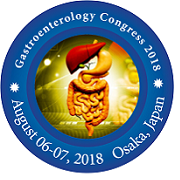
Luis Fernando Sandoval GarcÃa
Internal Medicine Msc, Instituto Guatemalteco de Seguridad Social (IGSS), Guatemala
Title: Hepatocarcinoma in Guatemala Contrasting Global Epidemiology
Biography
Biography: Luis Fernando Sandoval GarcÃa
Abstract
Statement of the Problem: Guatemala has the highest incidence and mortality of hepatocarcinoma (HCC) in Latin America and the Caribbean in both sexes. This liver neoplasm is the 7th cause of cancer in Central America, and the 2nd cause of incidence and cancer mortality in Guatemala. (Cancer Today, 2012) There are many risk factors already identified, in the indisputable first place is cirrhosis, then HBV (chronic and carrier), HCV, alcoholism, NAFLD etc. (NCCN, 2018). Only about 10% of HCCs develop in non-cirrhotic livers (Tiffany Hennedige, 2012). In every day medical practice, we have seen an increase in non-cirrhosis HCC, with no other traditional risk factors. It woke up our curiosity and interest to characterize our hepatic cancer. Methodology & Theoretical Orientation: Observational, retrospective and analytic study. All HCC attended at IGSS in 2015 – 2016 were analyzed, researching for epidemiological data, focusing in differences between cirrhotic vs. non-cirrhotic patients. Statistical analysis was performed with PSPP 2007. Categorical variables were presented with frequency and percentages, and analyzed by chi squared of homogeneity. Normality was tested with Kolmogorov-Smirnov. Numerical data were evaluated with t-student of independent samples. At relational level a bivariate study was made, then elevated to multivariate level. Findings: Total of 53 HCC cases were found, 15 cirrhotic and 38 non-cirrhotic (71.69%). Comparing both groups, there is no statistical difference between age, BMI, sex, family history of cancer, alcoholism, tobacco, diabetes mellitus, obesity, HBV, HCV, AFP, mass diameter, nor treatment (surgery, TACE, radiofrequency and sorafenib). There is difference in jaundice, ascites and encephalopathy, possibly due the same cirrhosis. It should be emphasized the importance of the high number of HCC in apparently healthy livers, contrasting global epidemiology. Staring with this new revealing knowledge we must analyze our medical approach to diagnose and manage HCC in Guatemala, and look for our nontraditional risk factors.

